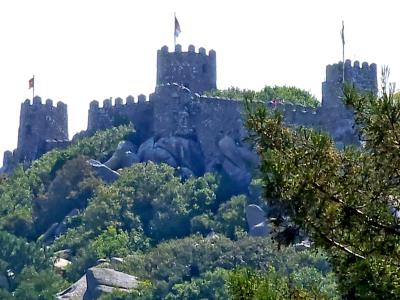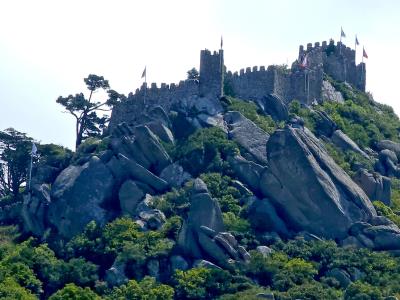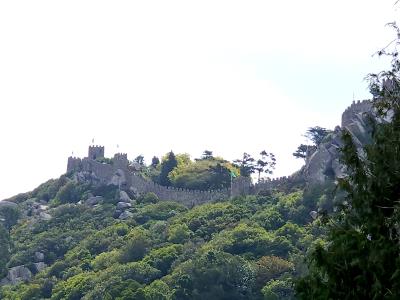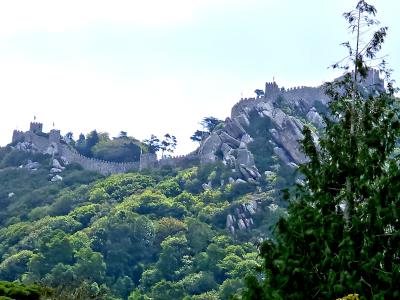Day 12 8/19/2023
Portugal - Sintra
Frank's Trip
CLICK on any image to enlarge - use mouse cursor to move enlargement it if doesn't fit area

2 Special Places...
I went back to Sintra from Lisbon for a day to see these last 2 special places. In hindsight, I should have stayed in Lisbon the whole time and just taken the train back and forth rather than spending 4 days in Sintra... hindsight is always 20/20 isn't it?
Both of the places I visited were lovely, but also disappointing in different ways. While Quinta da Regaleira didn't seem busy, everyone was already in line for the thing I wanted to see the most (Initiation Well) so I decided to forego seeing it. Then at Monserrate Palace there was a long and difficult trudge to the palace. I question whether I could have made it back out... BUT GOT LUCKY and got a ride all the way out from a little transport cart that runs around through the grounds there. LIFESAVER!
 Quinta da Regaleira
Quinta da Regaleira
The land that the Quinta da Regaleira now sits on was bought by António Augusto Carvalho Monteiro from the Viscountess of Regaleira in 1892 – hence the name. Carvalho Monteiro was a wealthy guy, and the estate he had built between 1904 and 1910 is also known as “The Palace of Monteiro the Millionaire.” Only one floor of the palace is open to the public and it is very nice, but not outstanding as compared to other places. The beautiful exterior is excellent, though, and can be seen in different ways from many points - as the pictures show.
The approach to the palace grounds is lengthy, uphill of course, but also interesting and picturesque.

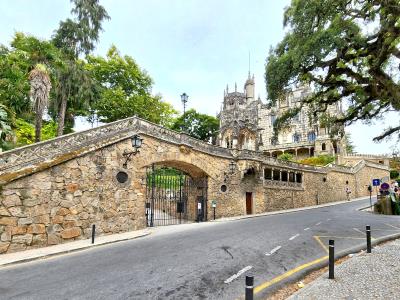

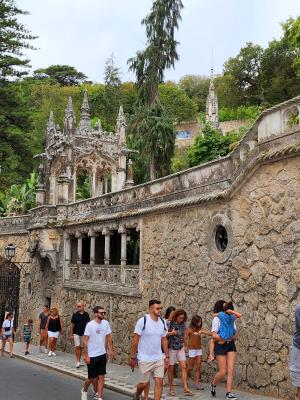
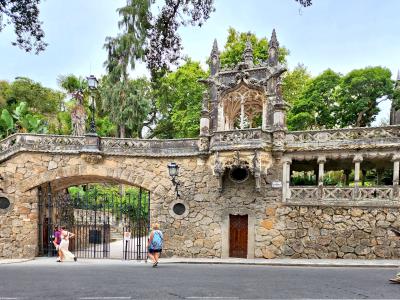

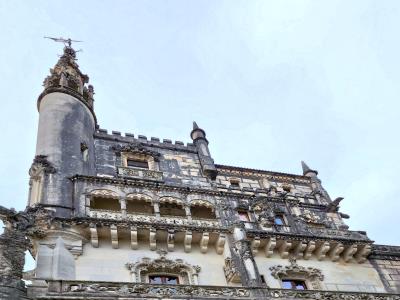
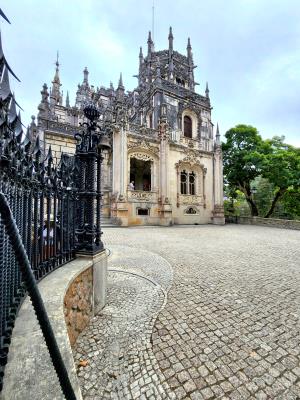

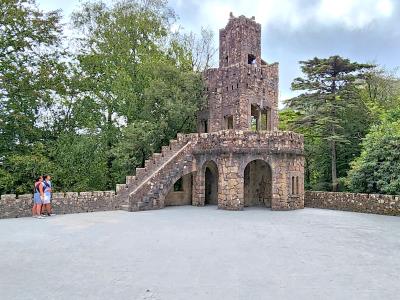
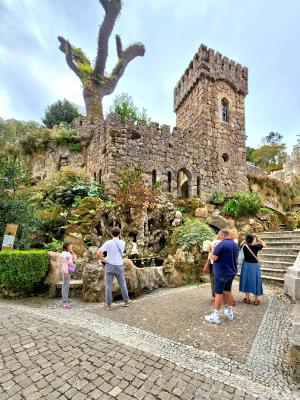

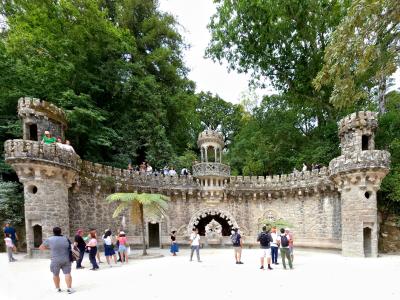


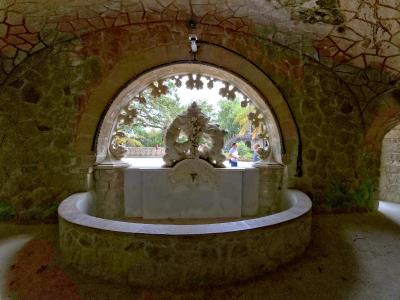

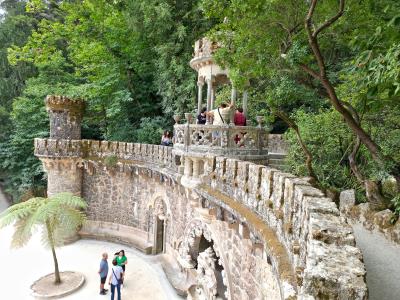
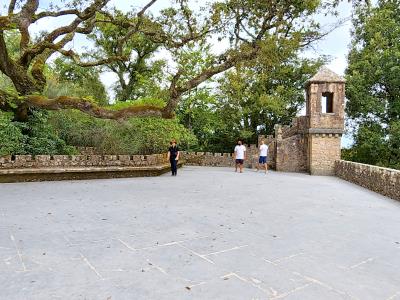
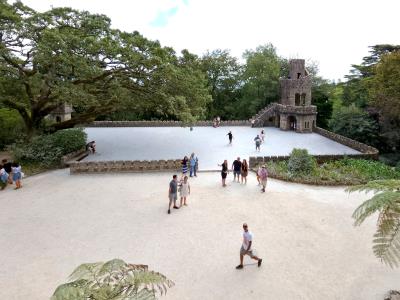
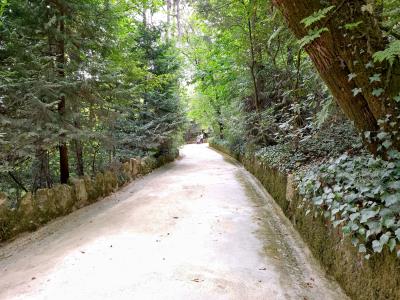

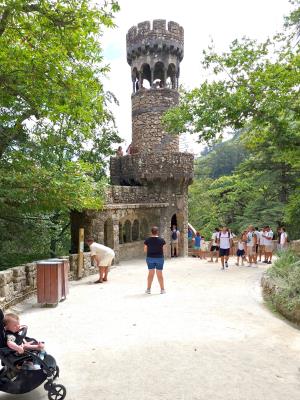
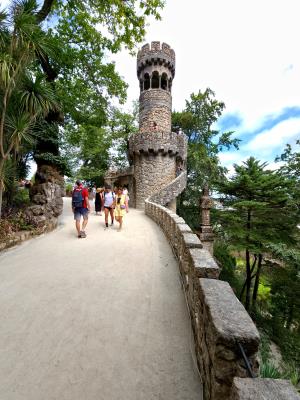
Initiation Well
The Initiation Well was used for initiations and rites of passages. Here one is supposed to enjoy making their way down a spiral staircase into the heart of the well. Follow the spiral staircase all the way to the bottom, and then exit via a hidden tunnel.
I had especially looked forward to this. The line waiting to get into the well was not only slow moving but extremely long and mostly in the sun. I followed it uphill quite a way and never did see the end - so I reluctantly skipped this feature.
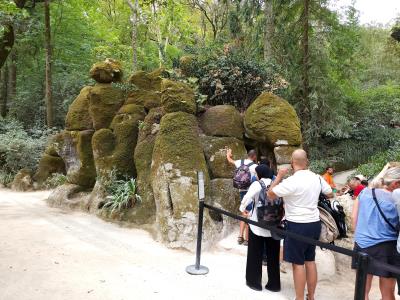
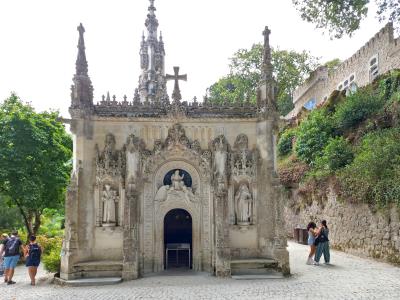
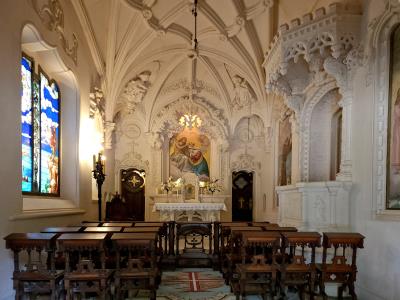

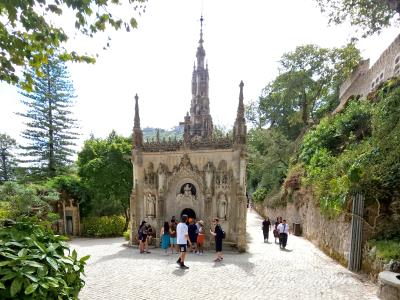


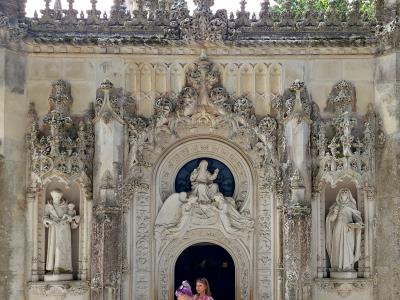

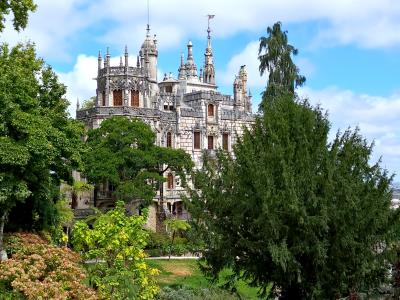
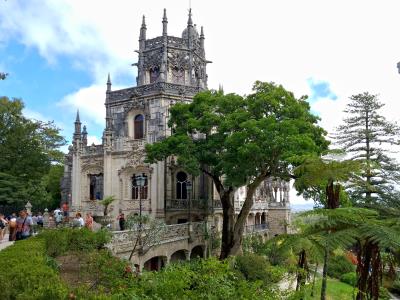

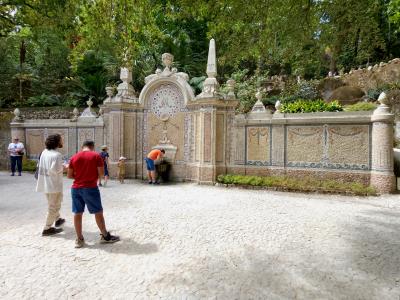


After strolling much of the grounds and seeing the many unusual architectural features, it was nice to come to the little cafe area (above right) and have a cold Coke and snack sandwich.
After this hiatus, I went on to visit the interior (below) which is pretty limited

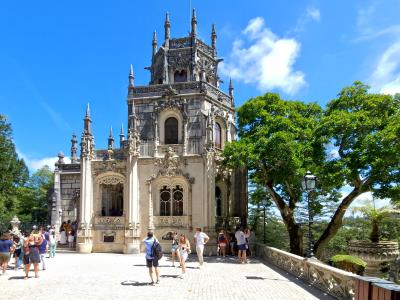
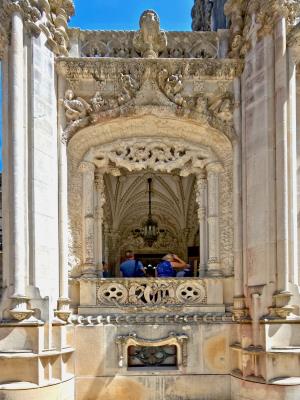
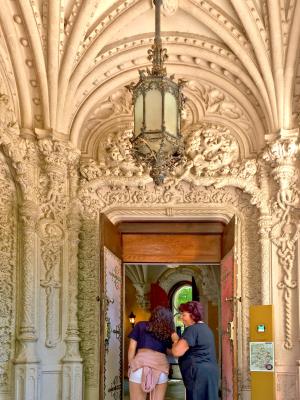
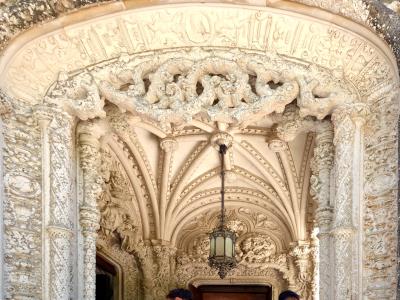

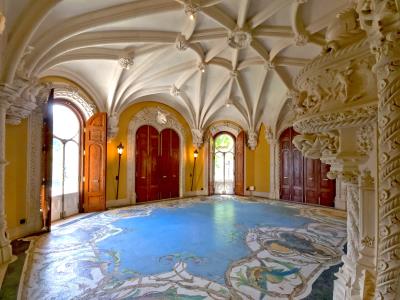
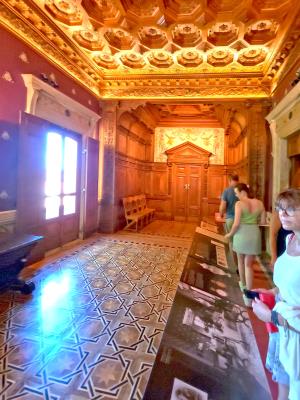
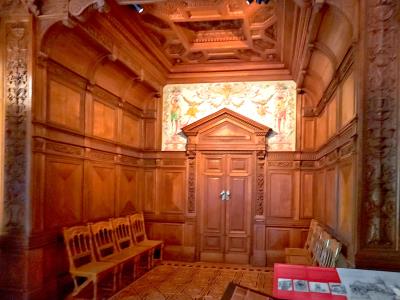

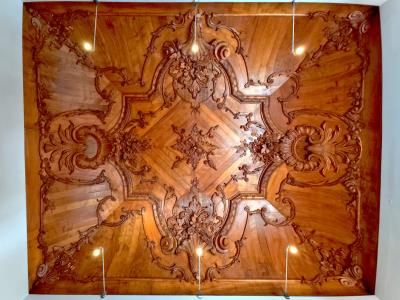
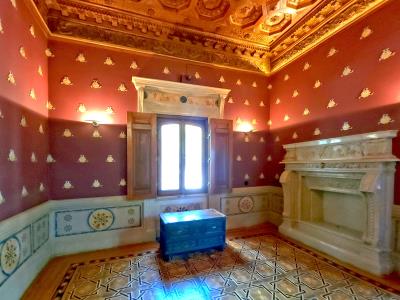

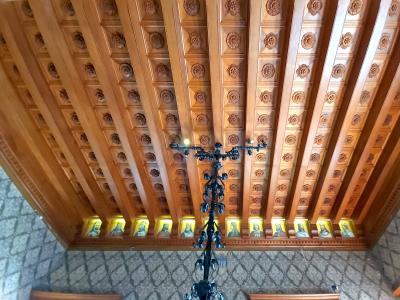
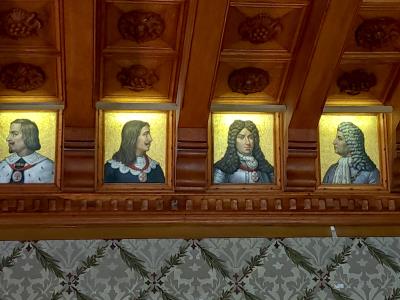

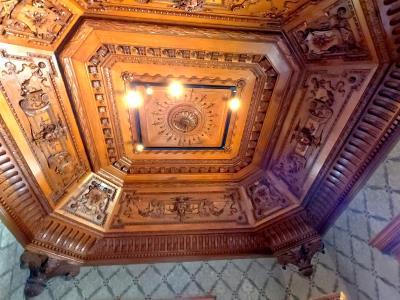
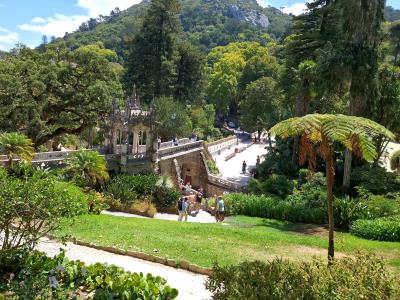
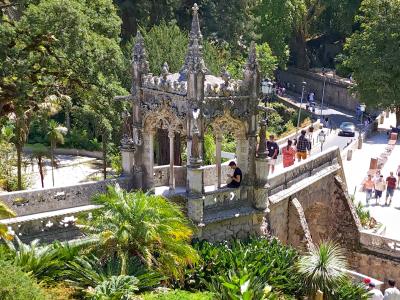
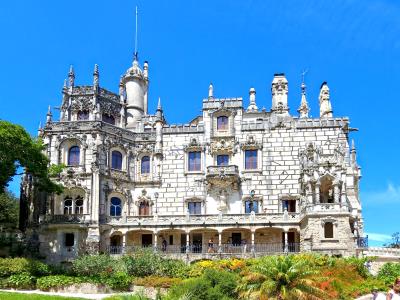

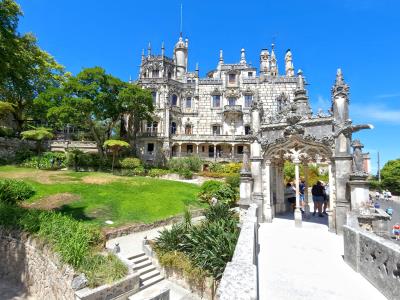
 Monserrate Palace
Monserrate Palace
This is a very special and unique building. It isn't very large but the detail work is awesome.
The Palace of Monserrate was designed for Sir Francis Cook by the distinguished British architect James Knowles Junior. It is an example of mid-19th century eclecticism, around 1860, adapted to the remains of the earlier building, also ruined in the 1755 earthquake. It combines neo-Gothicism with substantial elements derived from the architecture of India.

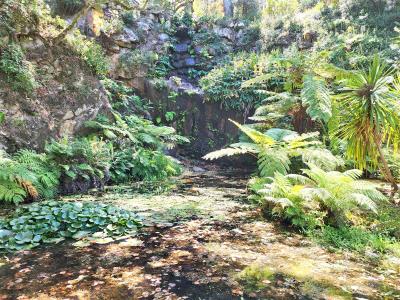
Cromlech
This 'folly' is believed to have been built by Beckford between 1794 and 1799. It represents a cromlech - a structure that was built by our prehistoric ancestors, presumably for religious purposes.

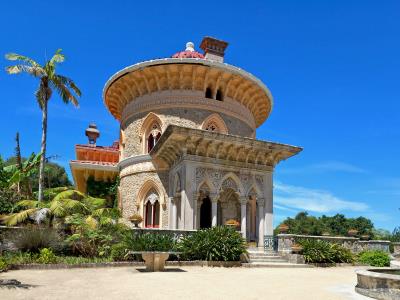
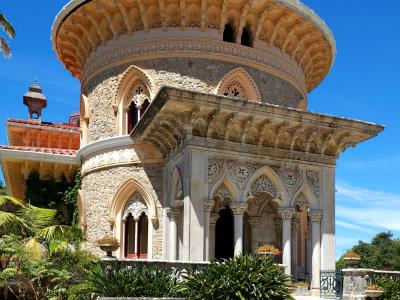
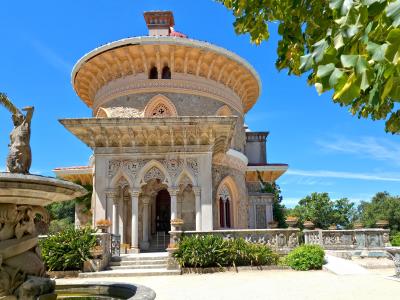

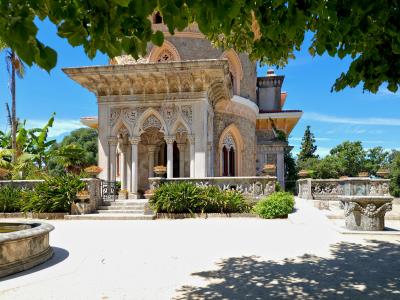


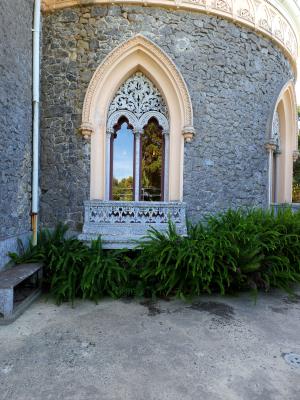
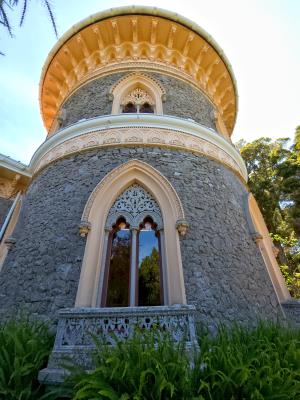
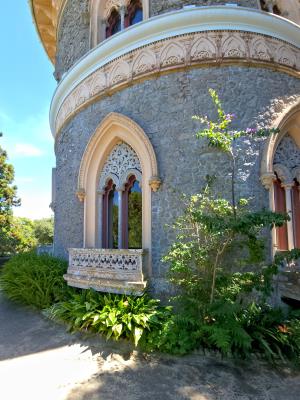

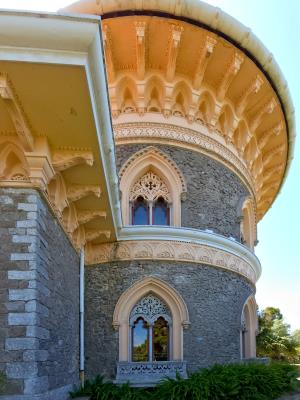
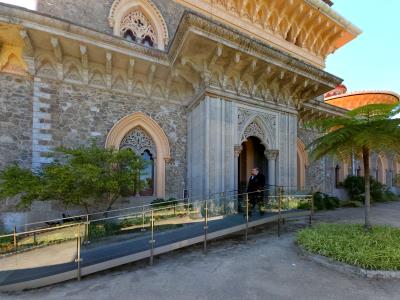
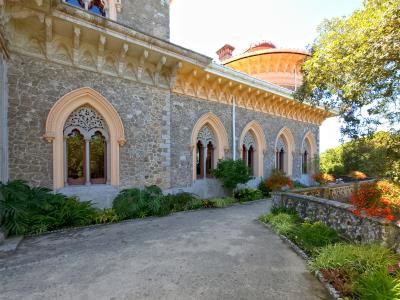


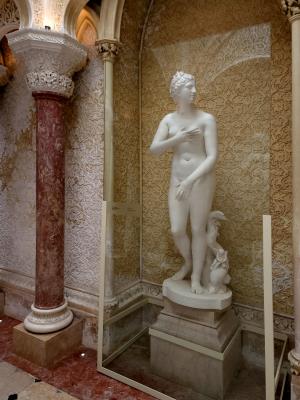

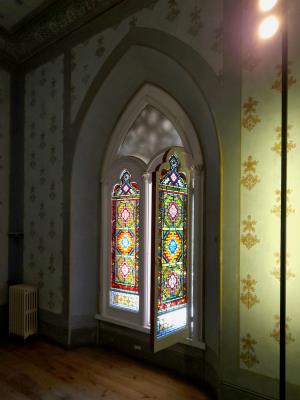
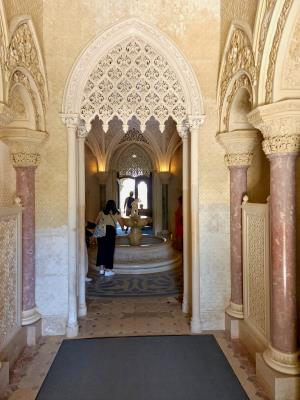
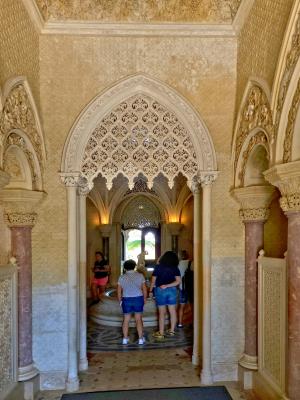

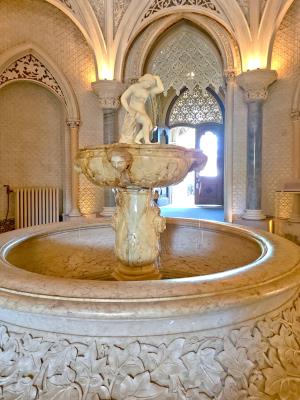

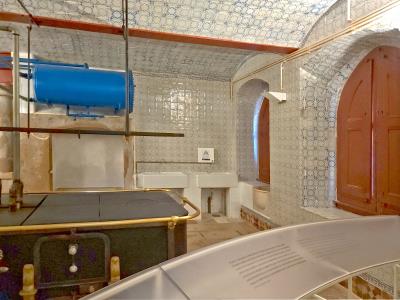
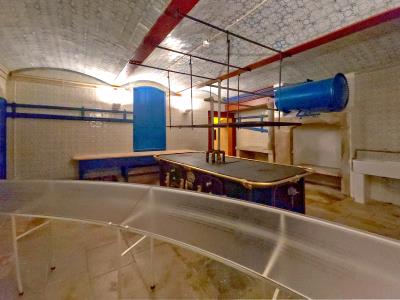


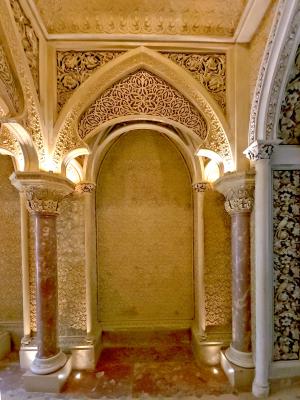

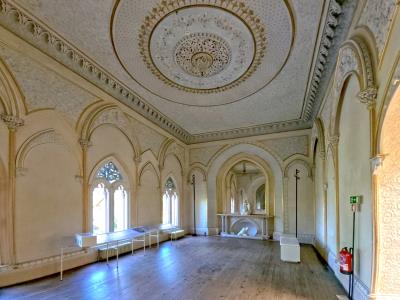
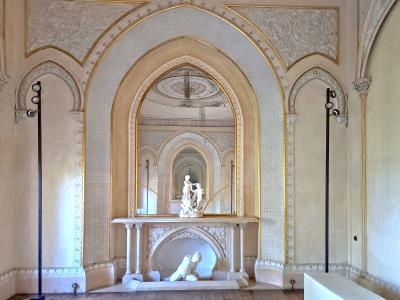
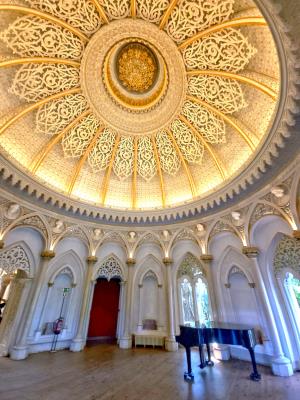
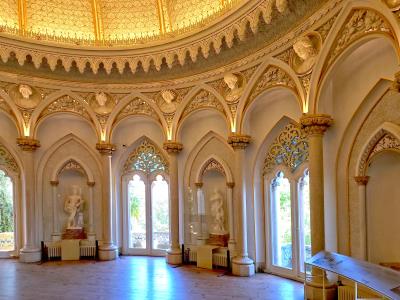
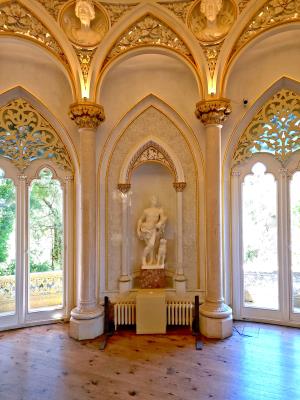
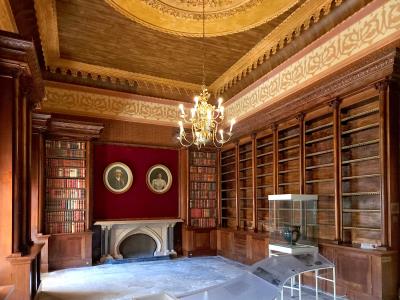
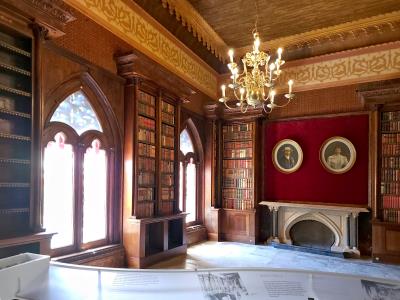
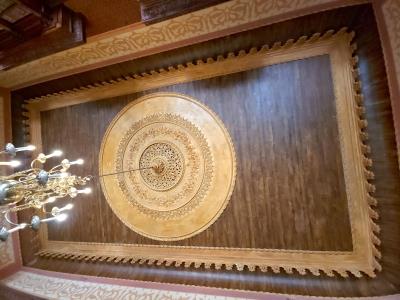


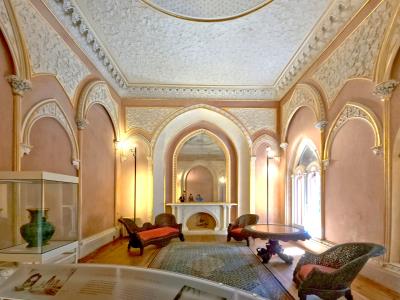

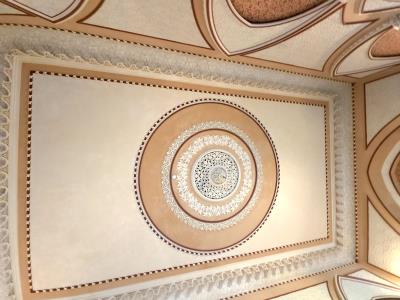
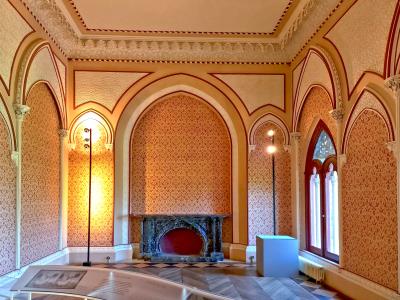
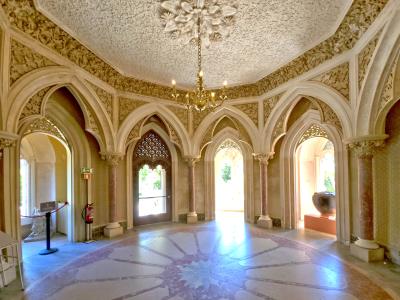

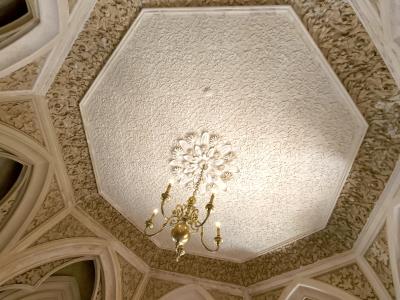
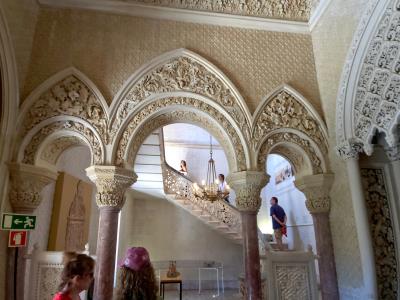
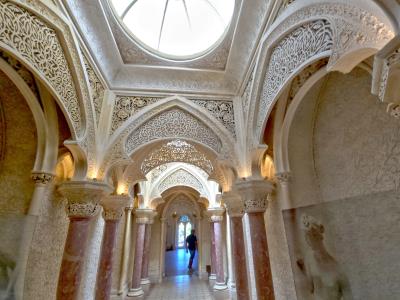

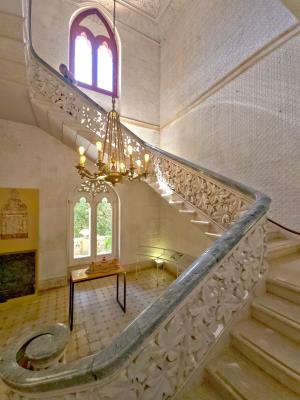
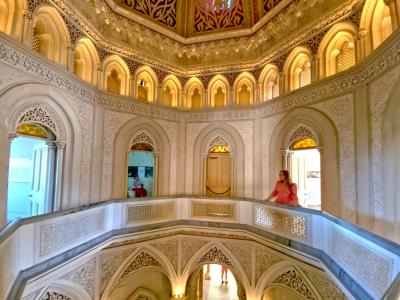



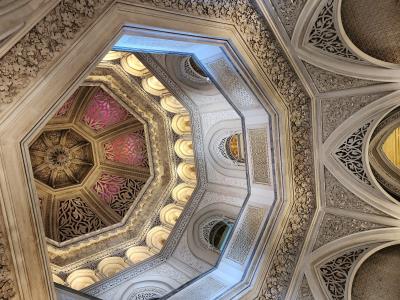
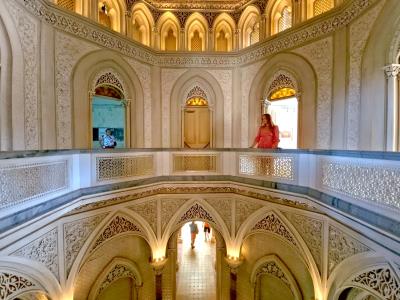
Videos: Monserrate Palace
2 short videos of the interior of the Monserrate Palace
Click [ ] icon for full screen
Castelo dos Mouros / Moorish Castle
The Moorish Castle, high on a peak of the Serra, might be of Visigoth origin; it was certainly used in the 9th century, during the Moorish occupation. It was finally abandoned with the successful Reconquista of Portugal from the Moors. Now in ruins, the remains of its barbican, keep and walls vividly illustrate the problems of constructing a fortress on a rocky outcrop of this kind.
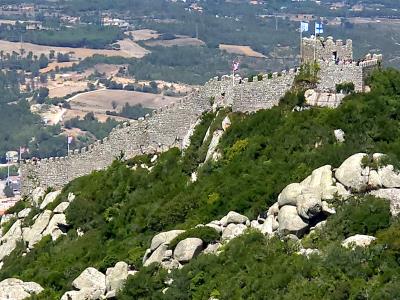
Moorish Castle
(from a distance)

